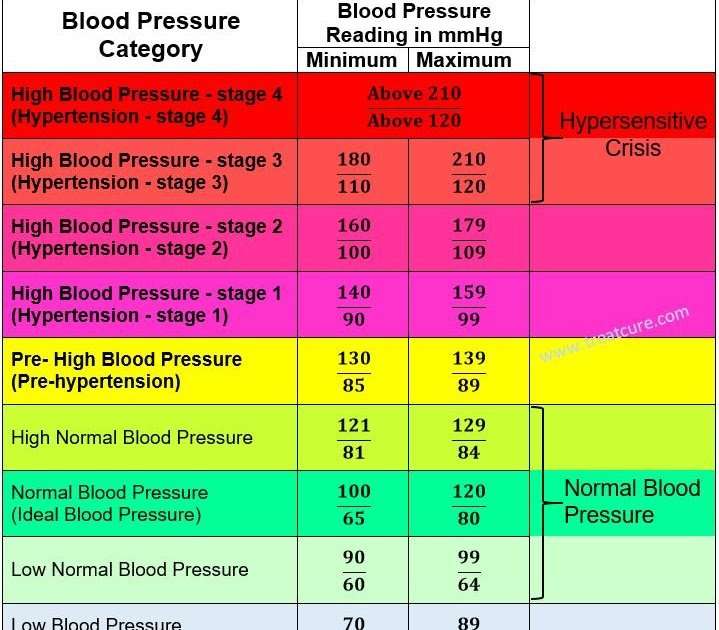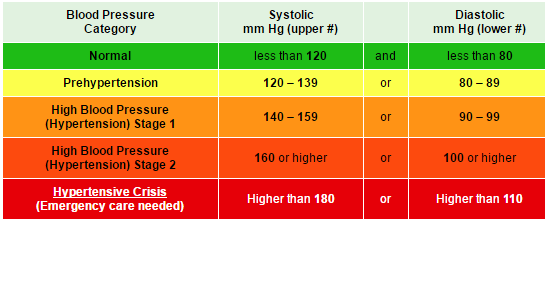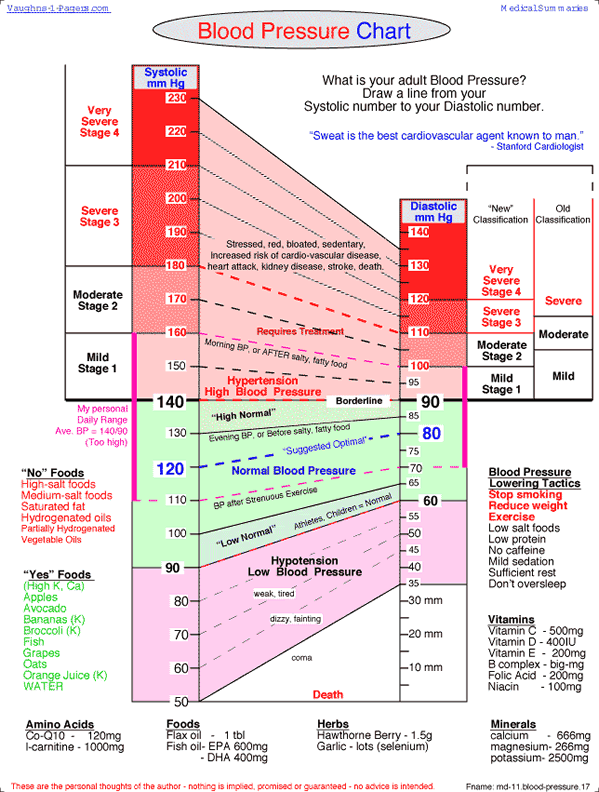Buildup Of Plaque In Arteries
Coronary heart disease caused by plaque that builds up in your arteries can cause widened pulse pressure. Narrowed arteries caused by plaque can result in your heart not being able to pump enough blood around your body.
According to the Journal of the American College of Cardiology, pulse pressure is affected by the amount of blood your heart pumps and your blood circulation. Cardiologists have found that a plaque buildup in the arteries increases pulse pressure.4
The National Heart, Lung, and Blood Institute say that other symptoms of atherosclerosis can include:5
- Squeezing pains in your chest that spread to your left arm
- Abnormal heartbeat
- Shortness of breath
- Lack of energy
Squeezing chest pains are one of the types of pain you should never ignore. You should always have chest pains checked out by a doctor, especially if you start getting new pains in your chest.
Diagnosis Of Low Blood Pressure And High Pulse Rate
A condition involving low blood pressure and high pulse rate is often transient in nature and not likely to be diagnosed during a routine doctors visit. However, if it is due to an underlying condition, it may be reproducible through testing or have certain markers that can be identified. The following are various testing modalities that help doctors reach a diagnosis.
- Blood testing: Can provide information about blood constituents, disease markers, and other abnormalities that can affect overall health.
- Electrocardiogram : Measures the electrical activity of the heart and can identify arrhythmia such as atrial fibrillation.Echocardiogram: An imaging test that allows doctors to view the size, shape, and relative function of the heart.
- Cardiac stress test: With the use of a treadmill and ECG, the heart can be stressed to varying degrees, looking for changes in heart rate and blood pressure.
- Tilt table test: Allows for careful measurement of the heart rate and blood pressure in response to varying degrees of tilt while laying down on a table. It is often used to investigate the causes of repeated and unexplained fainting.
What Does A Narrow Pulse Pressure Indicate
A low or narrow pulse pressure is indicative of a decreased heart function and is usually a predictor of death in patients with mild to advanced heart failure, according to 2010 study published in Texas Heart Institute Journal. Pulse pressure refers to the difference between systolic and diastolic blood pressure readings. Since a blood pressure reading of 120/80 is considered to be the normal or healthy blood pressure, the difference of 40 between the readings is also considered to be a healthy pulse pressure.
Both high or wide pulse pressure and low or narrow pulse pressure are believed to be indicators of poor cardiac health. A pulse pressure higher than 40 is abnormal and when it gets as high as 60, the patient is considered to be at risk of developing a cardiovascular disorder.
Apart from those already mentioned, a low or narrow pulse pressure may also be caused by a drop in the volume of the left ventricular stroke. Blood loss through trauma or accidents will also cause the pulse pressure to narrow. Other causes of narrow pulse pressure include shock, congestive heart failure, cardiac tamponade and aortic valve stenosis.
Abnormal pulse pressure readings, however, do not necessarily indicate health problems. For example, an individuals systolic reading will increase during and immediately after exercise while the diastolic reading will remain the same. People with a a significantly more lean muscle tissue such as bodybuilders also have a high pulse pressure.
You May Like: Can Iwatch Monitor Blood Pressure
When Is This Combo Not A Big Deal
Sometimes blood pressure and high heart rate occurs momentarily. For example, Dr. Taigen explains, when we stand up:
However, that phenomenon is short-lived. When the heart rate stays consistently high while blood pressure is low, there may be something problematic going on.
Exercise For Low Blood Pressure

Everyday exercise such as a 30-minute walk or light running can serve to improve circulation and alleviate any existing symptoms of low blood pressure. It is best to go with a companion if already a patient of hypotension, in case episodes of blurry vision, giddiness, or fainting happen during these times.
It is necessary to avoid undue stress to the body and sudden, jerky movements through heavy lifting and other strenuous exercise so that the flow of movement is smooth. Discipline and consistency regarding exercise aids the underlying causes of low blood pressure, while alleviating its symptoms as well.
Don’t Miss: High Blood Pressure Heart Pain
Normal Blood Pressure But Pulse Over 100
Asked by amanda jarmey
Normal Blood Pressure But Pulse Over 100?
I have a normal blood pressure but a high pulse rate of over 100. I’ve had dizzy spells and shortness of breath, plus swelling in my ankles. Everything was fine at my recent doctor’s appointment, but he did put me on beta blockers, telling me the high pulse rate was due to stress. The medication makes me tired and cause stomach issues, so I stopped taking them – now the high pulse rate has returned, as have some of the previous symptoms and some new ones, including a fluttering sensation in my chest. What could be causing this?
How Does Blood Pressure Work
During relaxation of the heart , the left ventricle of the heart fills with blood returning from the lungs. The left ventricle then contracts and pumps blood into the arteries . The blood pressure in the arteries during contraction of the ventricle is higher because blood is being actively ejected into the arteries. It is lower during relaxation of the ventricle when no blood is being ejected into the arteries. The pulse we feel when we place our fingers over an artery is caused by the contraction of the left ventricle and the ejection of blood.
Blood pressure is determined by two factors:
Generally, blood pressure tends to be higher if more blood is pumped into the arteries or if the arterioles are narrow and/or stiff. Narrow and/or stiff arterioles, by resisting the flow of blood, increase blood pressure. Arterioles may become narrower when the muscles surrounding them contract. Arterioles may become stiff and narrow when older patients develop atherosclerosis.
Blood pressure tends to be lower if less blood is being pumped into the arteries or if the arterioles are larger and more flexible and, therefore, have less resistance to the flow of blood.
The heart rate increases and the forcefulness of the hearts contractions increase, pumping more blood through the heart.
You May Like: Does Apple Watch Have A Blood Pressure Monitor
What Are The Dangers Of High Blood Pressure
You may have heard high blood pressure be described as the silent killer, and this is a pretty accurate description. It is very dangerous to have high blood pressure, even though it doesnt usually cause you any symptoms. Having high blood pressure over time can significantly increase your risk of having a heart attack or a stroke. This is why it is important to check your blood pressure, even when you are feeling well.
What Are Low Normal And High Pulse Pressure Levels
Lets look briefly at narrow, normal, and wide pulse pressure levels.
Normal pulse pressure. The normal pulse pressure range is usually between 40 mmHg and 60mmHg.
Low pulse pressure . Narrow pulse pressure can indicate that you have poor heart function. This is generally below 40 mmHg. For example, the Texas Heart Institute Journal reported that people with low pulse pressure of less than 35 mmHg and high heart rates were at greater risk of suffering a fatal cardiac arrest.2
High pulse pressure . Pulse pressure can widen as the difference between systolic and diastolic blood pressure readings increase. Doctors say that pulse pressure over 60 mmHg is considered high. It was found that people who have mild heart failure , may be at a greater risk of not surviving a heart attack if they have high pulse pressure.2
Recommended Reading: Claritan Blood Pressure
Monitoring And Controlling Blood Pressure
Baroreceptors are specialized cells located within arteries that act as blood pressure sensors. Those in the large arteries of the neck and chest are particularly important. When baroreceptors detect a change in blood pressure, they trigger the body to react to maintain a steady blood pressure. Nerves carry signals from these sensors and the brain to
-
The heart, which is signaled to change the rate and force of heartbeats . This change is one of the first, and it corrects low blood pressure quickly.
-
The arterioles, which are signaled to constrict or dilate .
-
The veins, which are signaled to constrict or dilate .
-
The kidneys, which are signaled to change the amount of fluid excreted and to change the amount of hormones that they produce . This change takes a long time to produce results and thus is the slowest mechanism for how the body controls blood pressure.
Nonetheless, the ways that the body can monitor and control blood pressure have limitations. For example, if a person loses a lot of blood quickly, the body cannot compensate quickly enough, blood pressure falls, and organs may begin to malfunction .
In addition, as people age, the body responds to changes in blood pressure more slowly.
Foods That Lower Cholesterol
If you’re not one of the 1 in 300 people Braun estimates has an inherited form of high cholesterol, you may be able to lower your LDL cholesterol by adopting a healthier diet. The NLM recommends following these general guidelines:
- Avoid saturated fats and trans fats. Instead, opt for healthier fats such as those found in unsaturated oils like olive, canola and safflower.
- Limit foods containing cholesterol. These are typically animal-based foods such as organ meats, egg yolks and whole-milk dairy products.
- Eat foods high in soluble fiber. Enjoy whole-grain cereals, fruits and beans. The fiber helps keep your body from absorbing cholesterol.
- Eat more fruits and vegetables in general. These have compounds called plant stanols or sterols that can also prevent your body from absorbing cholesterol.
In particular, the Mayo Clinic recommends the following foods that improve cholesterol levels that is, lowering your LDL cholesterol, raising your HDL, and lowering your triglycerides :
- Oatmeal or oat bran
- Fatty fish such as mackerel, herring, tuna, salmon and trout
- Almonds and other tree nuts
- Avocados
- Whey protein
Read Also: Bloodpressure Treatment
When To Contact A Medical Professional
If low blood pressure causes a person to pass out , seek treatment right away. Or call 911 or the local emergency number. If the person is not breathing or has no pulse, begin CPR.
- Black or maroon stools
Hypotension Blood pressure – low Postprandial hypotension Orthostatic hypotension Neurally mediated hypotension NMH
When Is Bloodpressure Considered High

Your blood pressure is the force of blood as it pushes against the walls of your arteries. Blood pressure is usually measured in the upper arm or wrist with a blood pressure machine. It consists of two numbers: a higher number called the systolic pressure and a lower number called the diastolic pressure.
Like the pulse, normal blood pressure is a range that depends on age. Children have lower blood pressures than adults. Guidelines published jointly by the American Heart Association and American College of Cardiology in 2017 define high blood pressure in adults as a pressure of 130/80 or above.
Also Check: Can Apple Watch Check Your Blood Pressure
Diet And Nutrition For Low Blood Pressure
A balanced meal with complex carbohydrates, fish, lean meat, fruits and cooked vegetables goes a long way in preventing hypotension. Changing meal patterns to make them more frequent and less heavy prevent as well as address postprandial fatigue and hypotension.
On diagnosis of a dip in BP, a low blood pressure diet that supplies adequate sodium, and potassium while maintaining blood sugar levels is generally recommended for patients.Increased consumption of non-alcoholic beverages helps maintain adequate hydration and is recommended. Increasing salt quantities or addition of soy sauce in everyday cooking is a simple change that combats effects of low blood pressure and may be suggested by your doctor.
Blood Pressure And Heart Rate Have Normal Target Numbers
False: There are guidelines, but whats normal varies from person to person.
Optimal blood pressure typically is defined as 120 mm Hg systolic which is the pressure as your heart beats over 80 mm Hg diastolic which is the pressure as your heart relaxes. For your resting heart rate, the target is between 60 and 100 beats per minute .
Keep in mind that heart rate and blood pressure are a customized fit. You need to work with your doctor to establish a baseline thats normal for you.
Recommended Reading: Can You Have Heart Problems With Good Blood Pressure
A Low Pulse Or Blood Pressure Always Indicates A Problem
False: Whats healthy for one person may indicate danger for another. For example, a fit person may have a resting heart rate in their 50s or, in some cases, even their 40s. It can actually be a sign of being in really good shape, Dr. Laffin says.
Low blood pressure can be a bit trickier, especially in older patients and those with heart disease. If youre in danger from low blood pressure, your body will tell you. Its really about how you feel, Dr. Laffin says. Are you feeling weak? The numbers on their own dont tell the story its the numbers paired with the symptoms you may have.
Low Blood Pressure & High Heart Rate Symptoms Causes & Treatment
The human heart is the most active organ in your body. Apart from it, all the other vital parts of your body get some time to rest and regain their strength, while the heart is always working and pumping blood to all the parts of your body. Even when you are sleeping, your heart is working to ensure blood supply to your body.
Blood pressure and heart rates are directly related. When you are suffering from low blood pressure, heart muscles have to work more to send blood to your body and thus the heart rate increases. The measure of blood pressure is alarming when it gets below 90 millimeters of mercury and 60 millimeters of mercury . Heart rate denotes the number of times your heart beats in one minute. For a normal healthy adult, safe range of heart rate is between 60 and 100 beats in one minute. Any variations from this normal range can be dangerous for your health as it can also become a reason behind heart attack.
In this article, we will analyze the major reasons behind low blood pressure and high heart rate. Further, we will also suggest some treatments for this problem.
Don’t Miss: Claritin D And Blood Pressure
Is A Heart Rate Of 40 Bad
Some people can have a heart rate of 40 beats per minute and have no symptoms and no long-term consequences. However in other people this can lead to symptoms and require treatment. In some patients a low heart rate is found as part of a routine physical exam or study such as an EKG or a heart monitor.
Recommended Reading: How Many People Die From Heart Disease Each Year
Q How Do I Know If I Have Low Blood Pressure
Don’t Miss: Symptom Of High Blood Pressure
Do Heart Rate And Blood Pressure Increase At The Same Rate
No, heart rate and blood pressure do not increase at the same rate. It is true that in some instances they will increase and decrease together. For example, when you are stressed or exercising, both tend to increase. When you are sleeping or digesting food, both tend to decrease. In other instances, like if you faint, or you are sick with a bad infection, your blood pressure will drop and your heart rate will increase to make up for it.
Treatment For Low Blood Pressure

Having low blood pressure is not always an immediate cause for concern. Many people with low blood pressure are unaware that they have it. Doctors may only consider treatment for low blood pressure if it causes troubling symptoms.
People who experience temporary symptoms of low blood pressure, such as lightheadedness or increased heart rate after standing up too quickly, should sit down to rest until the symptoms subside.
People who frequently experience these symptoms must take great care when moving from a prone position to standing to avoid falling.
If a medication causes symptoms of low blood pressure, doctors may recommend switching medications or lowering a dosage. A person should only change their medication under the guidance of a doctor.
The note that some people may not need treatment for low blood pressure at all. However, for those that do, possible treatments may include:
- drinking water to avoid dehydration
- taking medications to raise the blood pressure
- changing eating habits
Recommended Reading: Claritin And Blood Pressure Meds